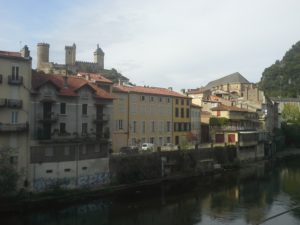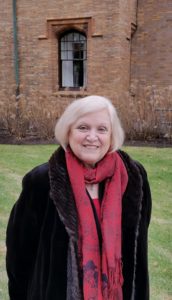Q & A with Author Carolyn Kay Brancato
How did you come to write The Night Belongs to the Maquis?
I’ve always had an interest in theater, having directed and choreographed numerous productions in New York and Washington DC. Some years ago I was taking an acting class at Ensemble Studio Theatre in New York City and the teacher, Chris Ceraso, asked us to write and perform a monologue in class. He randomly assigned people various characters: someone was assigned to be a truck driver; someone else a nurse; and I was asked to write and perform a monologue as a nun.
The key to a good monologue is to express conflict, so I thought about what kind of conflict could be most interesting for a nun. Rather than something trite, like a nun falling in love with a priest, I came up with the idea of having a nun be approached during World War II by a young German boy asking her for sanctuary because he abhorred the atrocities he was being asked to commit. This would test her devotion to forgiveness while putting her and those in the church at grave risk.
When I performed this monologue, Chris told me that I had the germ of a play there. While I had directed and acted, I had never written for the theatre or in any other short story or novel format. That was a turning point for me as I became interested not only in writing but also in World War II issues.
By chance, shortly thereafter, the New York Times Travel section published an article about a small town in the south of France on the border with the Pyrénées called Foix, southwest of Toulouse, which was the nexus for French Resistance (Maquis) activity. The article described the town as the hub for pilots who were shot down and led by Maquisard guides over the Pyrénées into Spain and from there back to the UK.

The Village of Foix
I took the Times article as kind of sign that prompted me to do further research, and a few months later I traveled to Foix in France. I had not developed any particular story in my mind, but was going there simply to get background and see what developed. I got off the train and chanced to meet three members of the French Resistance, one of whom was the leader of the circuit of Maquisards that enabled approximately 500 airmen to escape France. I would subsequently weave together fragments from the experiences of these men with other research into the role of the Church in hiding airmen and Jews to create a tapestry of fictional characters and events.

Carolyn in Foix
How did you make contact with these French Resistance men?
Quite literally by accident. Armed with my research, and a rudimentary command of French at that time, I got off the train in Foix, went to the tourist office and told the man behind the desk that I was an American researching this period. As it turned out, the man was Monsieur René Staad, who had been a guide working for the head of the Resistance circuit, Monsieur Enest Gouaze, who had been captured by the Gestapo and tortured by Klaus Barbie. M. Staad was kind enough to arrange for me to meet M. Gouaze and his wife and they invited me for lunch just outside of Foix. M. Gouaze gave me a copy of his 1969 Lyon deposition in the Barbie trial, which formed the basis for some of Jean Galliard’s scenes in the prisoner of war camp in the novel.
I should emphasize again that my characters are largely fictional. The particular traits I’ve given them are entirely for dramatic effect.
Where does the title of the novel, The Night Belongs to the Maquis, come from?
Following our lunch, M. Gouaze arranged for M. Staad to drive me up into the mountains to meet another one of his guides. I vividly recall this third small Basque man sitting in the brilliant sunlight in his farm house as we all drank shots to the Marquis.
I asked him if, guiding the airmen over the mountains, he hadn’t been afraid of the Nazis with their dogs. Proudly, he slammed his shot glass down and exclaimed: “The night belonged to the Maquis! They were afraid of us at night.”

The Imposing Pyrénées
How did the story of the nun come into play?
Another important element of my research came when I learned that the aunt of a friend of mine, Harriet Marple, was part of the Quakers who provided aid to the refugees in Toulouse. In reading about her in the book, Over the Highest Mountains: A Memoir of Unexpected Heroism In France During World War II, by Alice Resch Synnestvedt, I learned of the critical role of the religious organizations including the Catholic Church in hiding Jews and airmen from the Nazis. Again, I gave free reign to my imagination and made up the character of Madeline who becomes Sister Geneviève.
Incidentally, my father, while in medical school in St. Louis, was close to an elderly nun named Sister Geneviève who was very supportive of him in a difficult time of this life. I never met her but she bequeathed him her rosary upon her death and it came to me upon his death. I have used that rosary as further inspiration.
A final irony…it was Sister Geneviève who, in Paris in the year 451, is credited with inspiring the people to resist Attila and his Huns who were sweeping over Gaul; her exhortations apparently prevailed…Parisians are said to have recovered their calm, and Attila’s hordes turned off towards Orléans, leaving Paris untouched.


Well I really enjoyed reading it. This tip provided by you is very constructive for accurate planning. Lois Del Manard
Dear Lois,
Thanks for your comment on my website. I appreciate your taking the time to let me know your thoughts! All the best, Carolyn